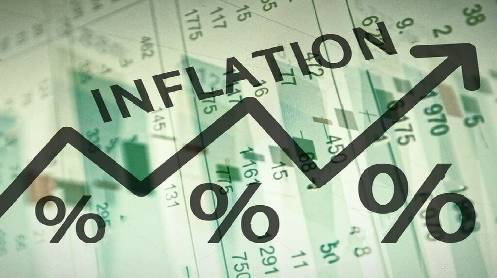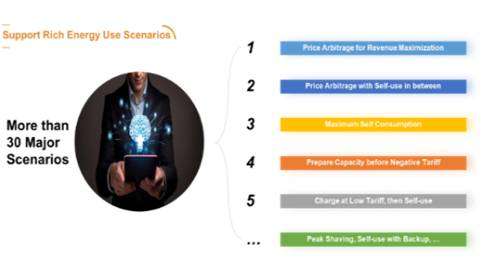ISLAMABAD/KARACHI: Pak-istan’s inflation rate soared to a new all-time high of 38 percent in May 2023, making it the highest in the region.This remarkable level has not been witnessed in the nation since the commencement of comparable records in 1957. The inflationary surge, which escalated from the previous month’s rate of 36.4 percent, can largely be attributed to an unprecedented increase in food prices.
Inflation in the month of May last year was 13.76 percent. Notably, there was a 1.6 percent increase in the consumer price index (CPI) compared to the previous month, the official monthly inflation bulletin said.
Pakistan now holds the unfortunate distinction of having the highest inflationary pressure in Asia. Previously, this distinction belonged to Sri Lanka, but Islamabad has surpassed it in terms of inflation. While Pakistani inflation is on the rise, Sri Lanka has experienced a consistent decline in inflation over the past eight months. In May, it recorded an inflation rate of 25.2 percent, a significant decrease from the 35.3 percent rate observed in April. Owing to taming inflation, this South Asian country cut its policy rate by 250 basis points to 14 percent.
In contrast, India’s inflation rate slowed significantly to 4.7 percent in April, the lowest since October 2021, down from 5.7 percent in March. Indian food inflation was only 3.8 percent.Similarly, China witnessed a decline in its annual inflation rate, which dropped to 0.1 percent in April 2023 from 0.7 percent in the previous month. Furthermore, Afghanistan’s inflation rate decreased to 1.9 percent in March from 3.5 percent in February 2023.
Surging inflation poses risks to the economy and individuals, reducing purchasing power, undermining consumer confidence, and acting as an “invisible tax” on cash holders, eroding the value of money.
The sharp increase in prices has sparked concern among economists regarding its potential impact on the welfare of Pakistani citizens and the overall economic stability of the nation and further create political unrest.
Pakistan’s ongoing political and economic instability, combined with the devaluation of the rupee against global currencies, is seen as a significant factor contributing to the rising prices. The increased expenses of imported goods, specifically petroleum products, have led to imported inflation. Amidst months of economic turmoil, the country faces a pressing balance of payments crisis and a looming deadline to meet IMF requirements before the conclusion of its support program. Failure to satisfy these conditions raises the risk of a sovereign default.
The 11-month July-May 2022/23 average inflation arrived at 29.16 percent against 11.3 percent in the same period of FY22, the Pakistan Bureau of Statistics (PBS) on Tuesday reported.
In May 2023, core inflation in Pakistan, which excludes food and energy components, hit its highest level since 2010, rising from 19.5 percent in April to 20 percent. This is the indicator sensitizing the State Bank on whether to increase the discount rate. The current policy rate is 21 percent.
The inflation bulletin also pinpoints that inflation was considerably higher in rural Pakistan than in urban centers. Urban inflation increased by 35.1 percent yearly in May 2023 as compared to 33.5 percent in April 2023 and 12.36 percent in May 2022. Rural CPI increased 42.2 percent on a year-on-year basis in May 2023 as compared to an increase of 40.7 percent in the previous month and 15.88 percent in May 2022.
The Wholesale Price Index (WPI) or producer price also increased by 32.8 percent in May 2023, against the same level in April 2023, and 29.6 percent in May 2022.
The weekly sensitive price indicator (SPI) also increased 43 percent in the month under review as compared to an increase of 42.1 percent last month and 14.1 percent in May 2022.
Since April 2022, inflation has shown a continuous upward trend. In May 2022, CPI rose to 13.8 percent, followed by further increases in June (21.3 percent), July (24.9 percent), August (27.3 percent), September (23.2 percent), October (26.6 percent), November (23.8 percent), and December (24.47 percent). In January 2023, CPI reached 27.6 percent, and it escalated to 31.5 percent in February, 35.4 percent in March, 36.4 percent in April and now stands at a record level of 38 percent in May on a year-on-year basis.
Food inflation in May surged to 48.7 percent, up from 48.1 percent in April. Housing, water, electricity, gas, and fuel costs accelerated by 20.5 percent, compared to 16.9 percent the previous month, and clothing & footwear by 22.5 percent against 21.6 percent in the previous month, while recreation and culture costs rose to 72 percent, compared to 68.6 percent in April. Similarly, the cost of restaurants and hotels rose to 42.3 percent, up from 39 percent in the prior month, and furnishing and household equipment maintenance charges rose to 43.5 percent, up from 40.5 percent in the previous month.
By contrast, transportation charges rose at a slower pace at 53 percent against 56.8 percent in the previous month, and alcoholic beverages & tobacco by 124 percent against 134 percent last month. Education charges in May increased by 8.4 percent (8.5 pc) while healthcare costs up by 19.3 percent (18.77pc).
On a year-on-year basis, prices of several food items saw a sharp increase in May 2023. The cost of cigarettes rose the most by 148 percent, followed by tea at 112pc, potatoes at 108pc, wheat flour at 99pc, wheat at 95pc, eggs 90pc, rice at 85pc, mash pulse, and moong pulse by 58pc each, beans 49pc, fresh fruits 53pc, dry fruits 50pc, besan 49pc, gram pulse 48pc, gram whole 48pc, butter 46pc, bakery and confectionary 44pc, sugar 41pc, beverages 39pc, fresh milk 38pc, chicken 36pc, milk products 36pc, cooking oil 34pc, mustard oil 30pc, condiments and spices 29pc, gur 28pc and vegetable ghee prices up by 26 percent over the same month of last year. Whereas, tomatoes prices declined by 40 percent and onions by 25 percent.
Non-food items also witnessed a surge in prices in May 2023. Textbook prices increased by 114 percent year on year, stationery by 79pc, motor fuel by 70pc, washing soap/detergents/matchbox 64pc, gas charges by 63pc, electricity charges by 59pc, personal effects n.e.c. 53pc, motor vehicle accessories 45pc, household equipment 42pc, construction input items 38pc, motor vehicles 38pc, liquified hydrocarbons 36pc, newspapers 34pc, solid fuel 32pc, cotton cloth 32pc., plastic products 29pc, accommodation services 27pc, mechanical services 25pc and transport services charges increased 24pc.
On a month-on-month basis, potatoes price are up by 17pc, gur (15.7pc, chicken 11.3pc, eggs 7.1pc, wheat flour 6.4pc, readymade food 5.7pc, meat 4.5pc, mash pulse 3.7pc, beans 2.9pc, spices 2.5pc, powder milk 2.4pc, rice 1.9pc, tea 1.8pc, moong pulse 1.7pc, gram pulse and masoor pulse and fresh milk by 1,6pc each. However, onions prices in one month were reduced by 33 percent, tomatoes 29pc, fresh vegetables by 10.7pc, fresh fruits by 3.2pc, sugar by 2.8pc and wheat by 2.3pc. Similarly, newspapers charges increased by 32.8pc, accommodation services by 22.8pc, stationery by 5.4pc, textbooks by 5.2pc, washing soap/detergents/matchboxes 4.3pc, motor vehicle accessories by 3.86pc, plastic products by 3.2pc, electricity charges 2.9pc, electrical appliances for personal 2.3pc, furniture and furnishing 1.9pc and construction input items 1.4pc. However, transport services 1.01 pc, motor fuel.
Meanwhile, rupee recovered sharply in the open market after the central bank allowed card-based transactions to be settled through the interbank market, which helped ease pressure on the currency.
According to a statement from Malik Bostan, Chairman of the Exchange Companies Association of Pakistan (ECAP), the local currency climbed to 290 from 315 versus the dollar on Wednesday. He said the unit increased by Rs25—a record highest single-day gain in the open market.
Bostan, though, told The News that the rupee was trading at 290-300 per dollar. However, according to the ECAP’s announced exchange rates, the rupee was trading at 299 to the dollar. The value of the currency increased by 16 rupees if we compare it (299) to the rate of 315. In the interbank market, the rupee ended at 285.38 per dollar, 0.03 percent stronger than the previous close of 285.47.
The rupee recovered at the same time as the release of worrying inflation and foreign exchange figures. Pakistan’s annual inflation rate increased to 37.97 percent, breaking the previous month’s record and setting a new one for the country. The nation’s troubles with the balance of payments crisis and the possibility of sovereign default have been made worse by this. The State Bank of Pakistan’s foreign exchange reserves are now at $4.1 billion, barely enough to cover a month’s worth of imports.
Pakistan is working harder to secure foreign financing. Approximately $3 billion of the country’s foreign debt is due this month. The International Monetary Fund lending programme remained stalled and is set to expire on June 30, 2023.
Bostan said that the significant increase in the rupee occurred when the SBP allowed commercial banks to buy US dollars from the interbank market to settle overseas payments made by their clients using credit cards.
The IMF’s advice to the government to concentrate on restoring proper currency market functioning is also connected to the rupee’s recovery. The growing gap between the rates in the official and kerb markets concerned the IMF. The currency difference between the two markets has begun to close as a result of the rupee’s climb in the open market. Earlier, banks were purchasing $8 to $10 million on average per day from the exchange firms to settle card-based cross-border transactions with international payment schemes like Visa, MasterCard, etc., according to Bostan.
“Approximately 50 million credit and debit cards have currently been issued by commercial banks,” he said and warned that referral operators and black marketers would use credit cards to make payments if they learned that they could obtain dollars at a 10 percent discount through those same cards.
“Since banks won’t acquire dollars from exchange firms to meet their foreign payment demands for credit cards, the demand for foreign currency is expected to continue to decline,” he said.
“Customers will come to sell dollars if the market stabilises and the rupee is not volatile, which will boost the supply of dollars available in the kerb market.”
He has called for the immediate introduction of a 10 percent tax on purchases made online and in other countries for luxury goods using debit and credit cards.
Meanwhile, Minister for Finance Ishaq Dar said that the existing difficult environment on the economic front was huge on account of its size than the 1998-99 and 2013-14 as the economy slide to 47th position from 24th position.
He said that the government took a major step on Wednesday by allowing payment from inter-bank on credit cards so it resulted in the strengthening of the rupee against the dollar in the open market.Federal Minister for Finance and Revenue Senator Mohammad Ishaq Dar held a meeting with a delegation from Islamabad Industrial Association led by its President Mohammad Ahmad on Budget 2023-24 proposals at FBR on Thursday.
Ishaq Dar in his address said that Pakistan would never become Sri Lanka by facing default as it was first priority to fulfill all its obligations on stipulated timeframe. He said whatever gained from 2013-17 which was lost. He said that there was challenging environment but some positive developments were also taking place as the government reduced the POL prices twice in the last few weeks.
He said that there was another wrong perception that Pakistan’s external debt crossed $100 billion mark but the country also possessed $2 to $3 trillion assets. Alone the value of gas pipeline in the country possessed $40 to $50 billion. There are ports, motorways and minerals including Reko Diq having value of $300 to $500 billion. “I have a firm belief that this country will take off and will get back to the position where we stand in 2017,” he added.
Pakistan, he said, could not afford meltdown of its economy like USSR as such power could not survive when its economy destroyed. “We will fulfill all of our sovereign commitments and will come out from this phase in order to return to normalcy,” he added.
According to official statement issued by Ministry of Finance stating that the delegation thanked the Finance Minister for inviting the budgetary proposals from business community. They discussed the current economic situation of the country with the Finance Minister and informed him about the issues being faced by them particularly related to taxation. The delegation also presented their proposals to address those issues through the upcoming budget 2023-24. They also guaranteed the Finance Minister of their continuous assistance to the Government for economic development.
Finance Minister Senator Ishaq Dar appreciated the budgetary proposals of the delegation and expressed the resolve of the government in overcoming the issues being faced by the business community to ensure the economic growth of the country. He also assured the business leaders that Government will provide all possible assistance to the business community for the economic stability and growth by bringing forward a business and people friendly budget for Fiscal Year 2023-24. The delegation thanked the Finance Minister for considering their budget proposals.
The delegation included Usman Shaukat, Tariq Siddiq, Malik Sohail Hussain, Mian Akram Farid, Zakria A Zia, Atif Akram Shaikh, Waheed uddin, Shaikh Amir Waheed, Nasir Qureshi, Mian Shaukat Masud and others.







